Kate Daly
Into the Knitting Resistance: The Pussyhat Revisited
I’m a knitter. If there was a card, I’d be a card-carrying knitter. I’ve been knitting for at least six decades, and I have the evidence to prove it. In 1964, I knit a hat for my boyfriend, and 60 years later that hat, and our marriage, have endured. I’ve knit many other hats since then, but there’s one that may even outlast my marriage. In 2017, I proudly knit my first Pussyhat. I’ve worn it and several variations of it to demonstrate against misogyny.
The Pussyhat is the latest version of a phenomenon that dates back centuries: knitting as a form of resistance. Long associated with stereotypical domesticity, the craft of knitting has taken on meanings that transcend the everyday. In recent years, knitting has emerged as a form of social and political discourse promoted as “craftivism” by the writer and activist Betsy Greer.
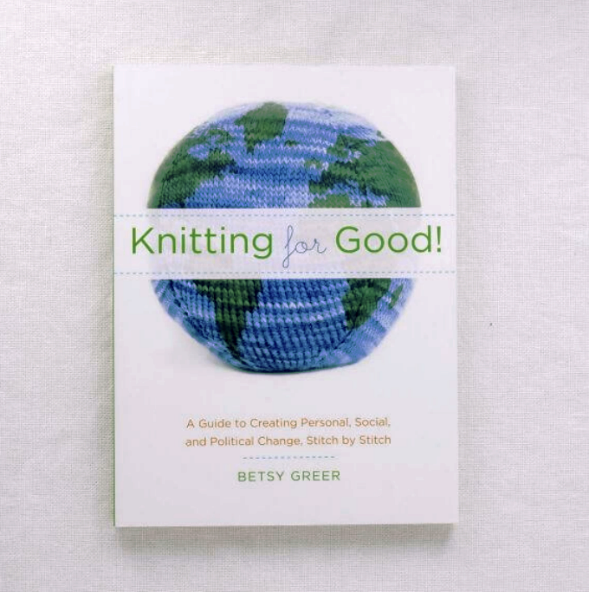
Typically, items of knitting resistance are accessories: hats, scarves, wrist warmers or mittens. Many can be knit with minimal technical expertise, in a relatively short time, and with modest financial investment. Worn on the most exposed parts of the body, they make an ideal medium for visual statements.
***
Within a year of its creation, my original Pussyhat found a new home in the collections of the Goldstein Museum of Design at the University of Minnesota. I’d knit that hat before Donald Trump’s first inauguration to support the Women’s March on Washington, D.C. Before his election in 2016, Trump had said of women: “You can do anything … Grab ‘em by the pussy.” I wasn’t just mad, I was infuriated by his remarks, and I channeled my anger creatively. I knitted that first hat according to directions supplied by the PussyHat Project, co-founded by Krista Suh and Jayna Zweiman as a way to counter Trump’s misogyny.
Like any curious knitter, I simplified and improved on the basic instruction as I knit subsequent hats, experimenting with color, fiber content, yarn weight, needle sizes, cast-on stitches and different bind-off techniques. Mind you, there was nothing wrong with the original instructions; I just wanted to knit more hats. As you can see from the accompanying photographs, there were no rules per se other than a vivid, pink-colored hat with catlike ears. And knitting more meant knitting for myself, knitting for others, knitting with others, and comparing results—not only the Pussyhat design and their aesthetic interpretations but the ideas that they represented and communicated.
***
A well-known literary example of knitting resistance appears in A Tale of Two Cities by Charles Dickens. Although written in 1859, the novel takes place between 1775 and 1795 during the French Revolution. A central character and knitter, Madame Defarge, develops a complex code through stitch types as she creates a scarf that lists those she intends to kill. When asked, “What are you knitting?” her chilling response is, “Shrouds.”
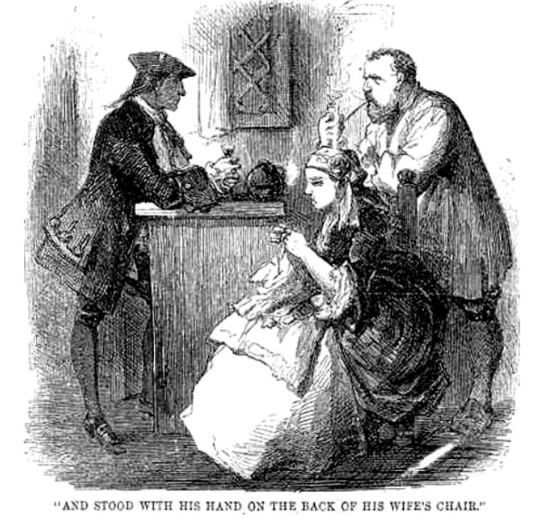
(Illustration by John McLenan)
Wars and espionage became occasions for knitting resistance throughout the 19th and 20th centuries. Women embedded stitch patterns as messages, communicating covert troop locations and movements to local and regional authorities. By varying dropped stitches and sequences of knit and purl stitches, knitters created a common language of communication.
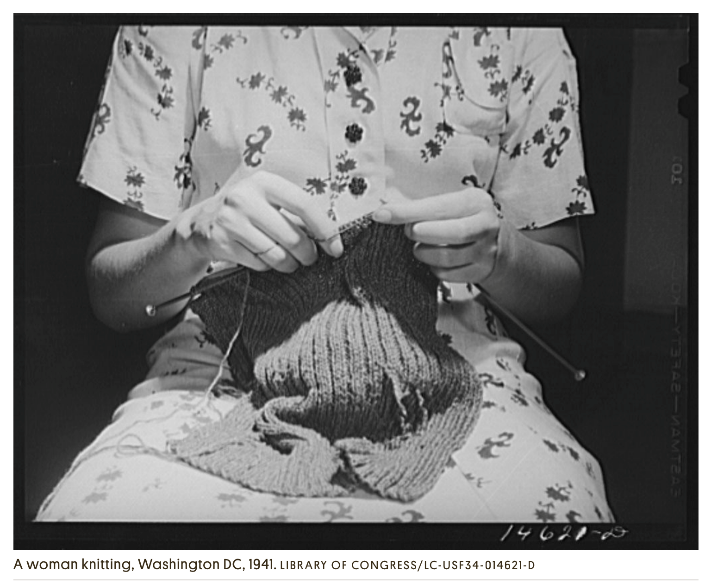
***
On January 21, 2017, approximately 500,000 pink-hat wearers demonstrated in Washington against the Trump inauguration. In Minnesota, I joined the more than 90 thousand pink-hat wearers who gathered at the Minnesota State Capitol to do the same. Although not all demonstrators wore hats, they still supported those who did and vice versa. I reveled in the knowledge that there was such diversity in the crowd and imagined the numbers of people who took the time to purposefully knit a hat and either wear it themselves or give it to someone else. It was a unifying symbol of defiance against an unwelcomed, misogynistic presidential wannabe.

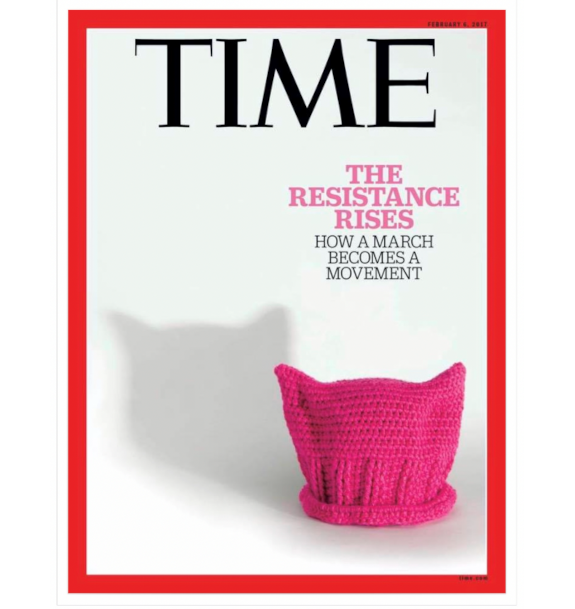
***
Regardless of the occupier, knitting resistance spread with the advance of colonialism, as hand-knit items became cultural icons for the oppressed. When Russian troops invaded Latvia, Latvian women carried “just their mittens” while fleeing their homes. In Norway, red knit caps became a symbol of resistance during the country’s quest for independence and later under Nazi occupation during World War II.
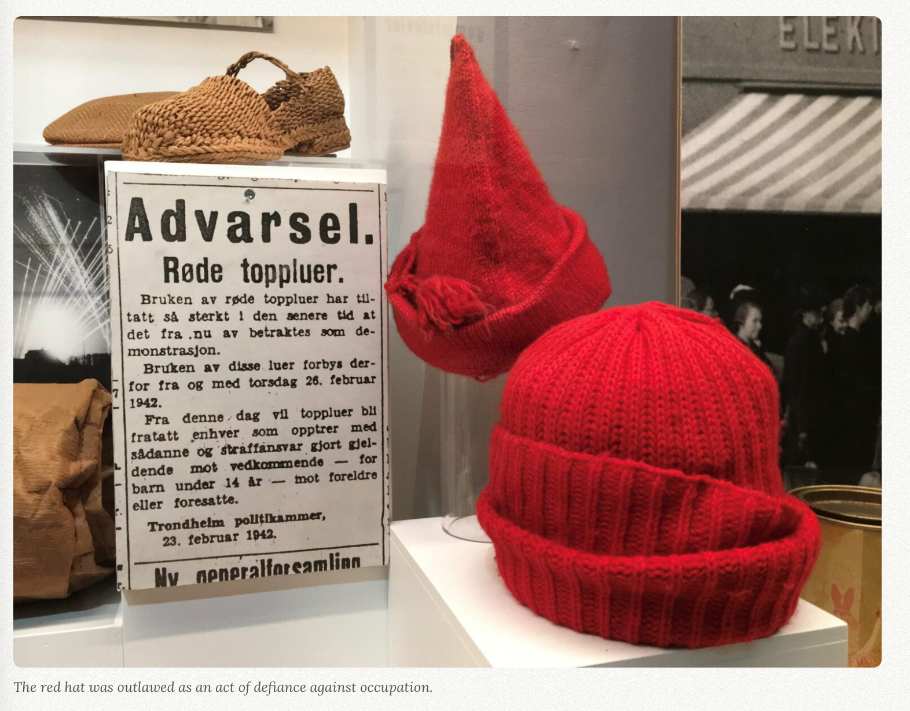
***
Three weeks after the Women’s March, while vacationing in Palm Springs, I was still knitting Pussyhats. This time, I knit a Missoni designer “knock off” of it. To this day, I’m unsure why I decided to wear any version of it on my daily walkabout with my husband. After all, the temperature was in the 80’s. We walked throughout the small residential community and throughout the commercial district. At some point, we walked into the Palm Springs Convention Center to use the “facilities.” Across the vast open interior, a young woman spotted me wearing my hat and ran up to hug me. She was as excited as if I were a long-lost friend or relative. She recognized the hat and told me she’d knit one as well.

***
In 2018, a fingerless glove pattern became a symbol of the March for Our Lives, organized by survivors of the Marjory Stoneman Douglas High School shooting in Parkland, Florida, to protest gun violence and advocate for stricter gun laws. The pattern featured embroidered eyes meant to represent each person killed or injured in school shootings from 2014 to the present. Worn by attendees, the gloves conveyed the message: “These eyes will show those in power that we are watching them and will hold them accountable for their actions.”
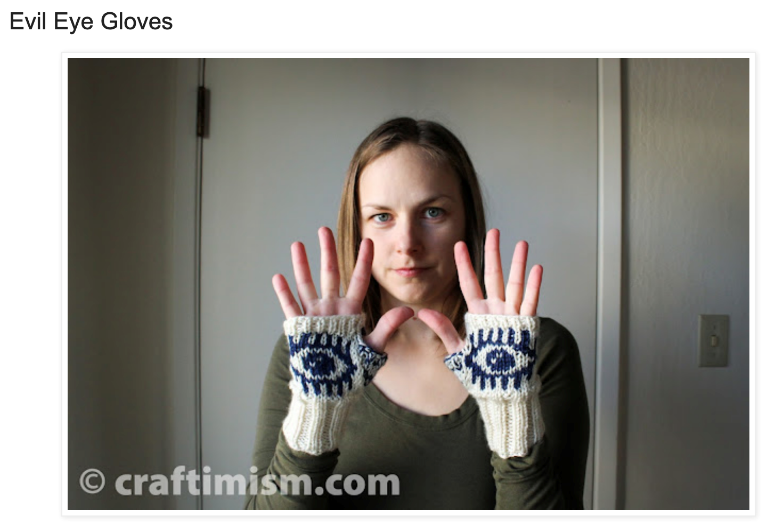
***
Fast Forward to 2025. Eight years have passed since the Women’s March on Washington, and Trump is positioned again as a wannabe president with all his misogyny intact. I can’t recall how many Pussyhats I actually knit, but if my stash of yarn is any indication, I still have a wealth of “Barbie” pink. I also have the patterns used to knit them plus three hats in my own collection. Is it time for them to resurface this month? According to a Time Magazine article, “The Women’s March Rebranded and Reorganized. Now They’re Ready for 2025.” But wait, it’s the People’s March; there’s no unifying symbol, color or hat! We want to include everyone. Might the Pussyhat do just that?
They say that we stand on the shoulders of those who came before us. Could this also apply to us knitters? After all, the late Elizabeth Zimmermann stated in her book, Knitting without Tears: “Knit on with confidence and hope through all crises.” It might be time to take up our needles with yarn and knit up one more pink hat.
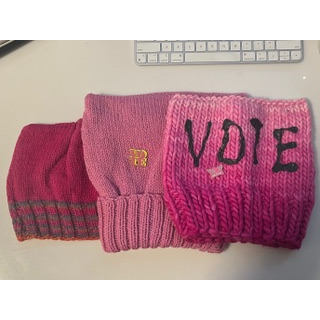
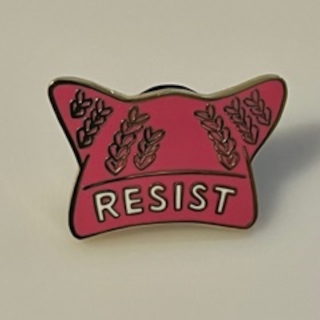
***
